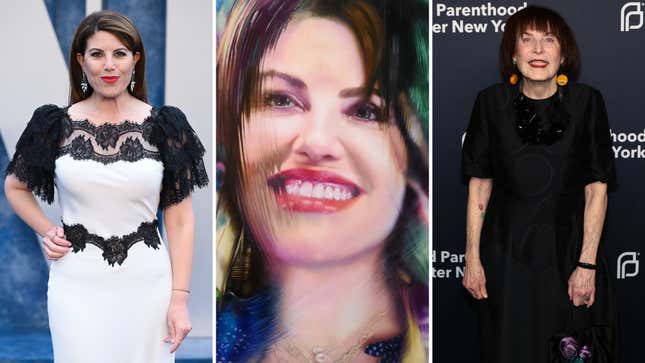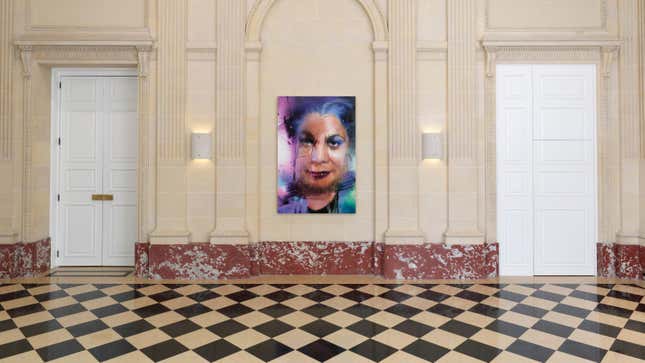It’s Clear Why Monica Lewinsky Felt Safe Having Marilyn Minter Paint Her First Portrait
“Monica’s image has been used against her in awful ways,” Minter told Jezebel of her portrait of Lewinsky. “And I wanted to change that narrative.”
In Depth

On the second floor of the LGDR gallery in New York City’s Upper East Side, six giant enamel-on-metal portraits by Marilyn Minter hang in a sunlit parlor. Gloria Steinem, Roxane Gay, and Monica Lewinsky’s faces take up one side of the room, creating a triptych of sorts. They’re not quite “past, present, and future” nor are they “maiden, mother, crone.” On the other side are portraits of Glenn Ligon, Lady Gaga, and Mickalene Thomas. While those three don’t harmonize in the exact same way, a through-line of individuals who’ve fought to work through their many identities—public, sexual, gender, creative—does.
Minter’s latest self-titled show opened on April 12 and marks her first foray into portraiture. It was also the first time Lewinsky and Gay ever sat to have their portrait done—an experience Lewinsky called losing her “portrait virginity.” At 74, Minter has built a name for herself with zoomed-in, larger-than-life photorealistic paintings of tawdry, hyper-feminine body parts: cherry-painted lips and glittered eyelids along with the blemishes, follicles, and wrinkles that make our bodies our own dominate her work. But where her past work feels like an excavation, these new portraits—of women whose likeness has been both misused and used against them—feel like she’s painting a protective orb around them. Almost as if she’s not trying to paint them, but something of a holy version of them—so they can be seen but not made vulnerable.
During the show’s press preview, Minter, who is enthusiastic and witty, told Jezebel she’s been quick to note that my generation (millennial), two or so below hers, have been much more eager to connect with her work. Older generations seem to feel “contempt for the glamour and sex” that she depicts and that that contempt “is based in fear.” At the beginning of her decades-long career, her embrace of pornography and erotic glamour was rejected by mainstream feminism. She was sex-positive during a time when the phrase didn’t exist.
“I make work about the times we live in. The beauty and fashion industries are huge engines of the culture, and this younger generation has helped to destigmatize our 20th-century conceptions of what a beautiful body is,” Minter later wrote in an email. “It wouldn’t surprise me if younger people find my work very normal.”
-

-

-

-

-

-

-

-

-

-

-

-

-

-

-

-

-

-

-

-

-

-

-

-

-

-

-

-

-

-

-

-

-

-

-

-

-

-

-

-










































